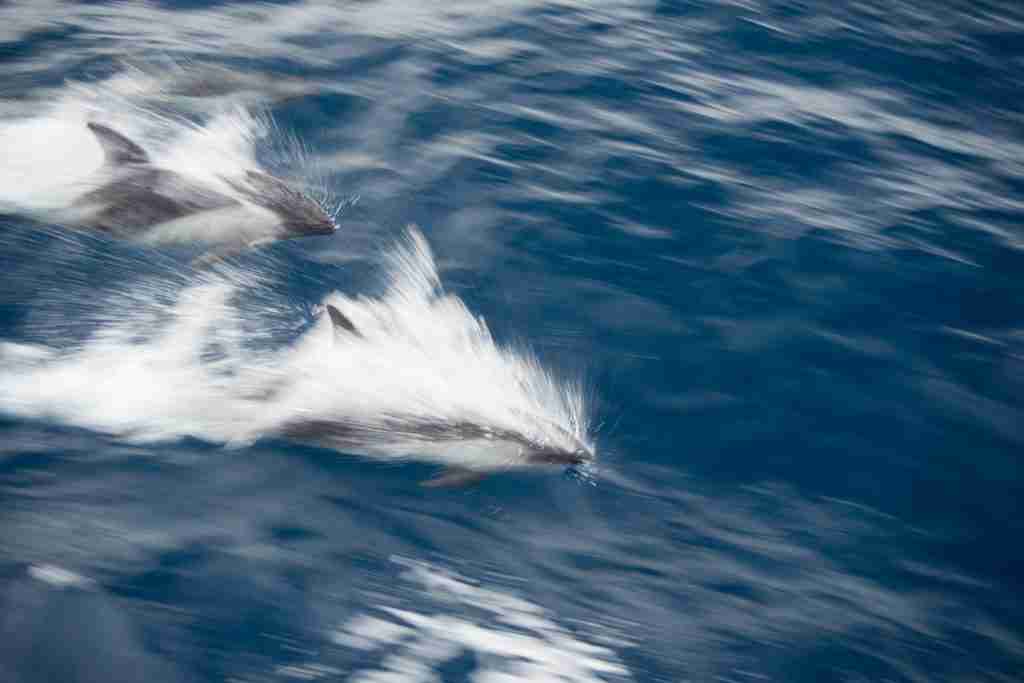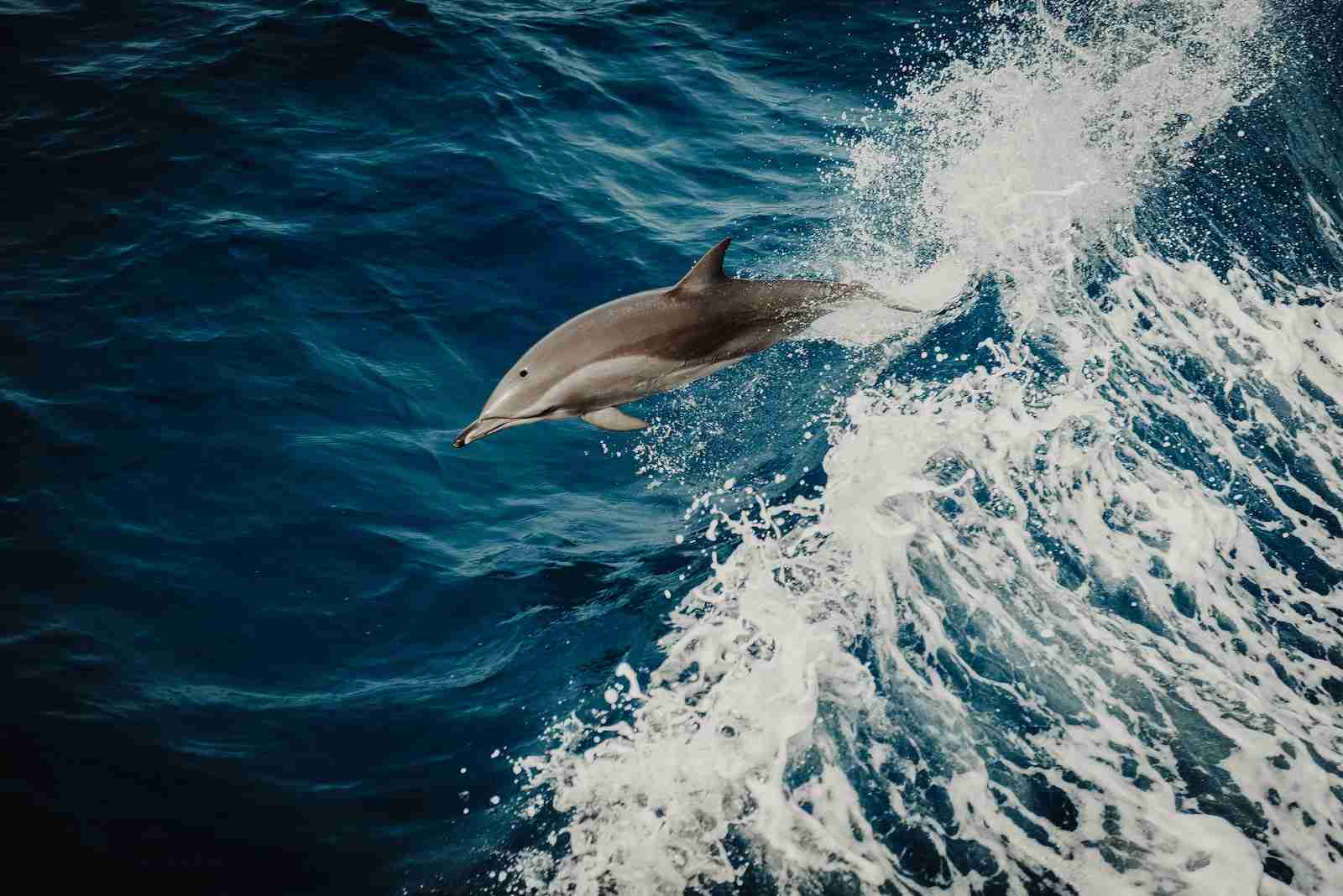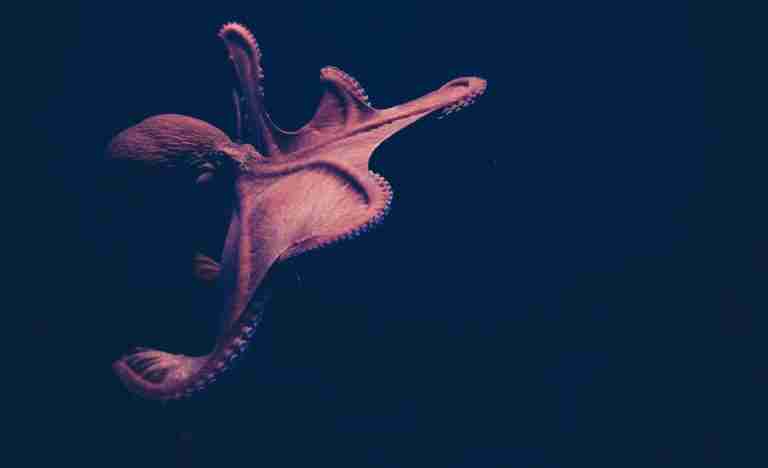24 Fun Facts About Dolphins You Don’t Know
1. There are over 40 different species of dolphins.
Dolphins come in various shapes and sizes, with more than 40 distinct species known to exist.
From the charming bottlenose dolphins commonly seen in aquariums to the elusive and strikingly patterned orcas, also known as killer whales, this diverse family of marine mammals spans the globe.
2. Dolphins are known for their playful behavior and often leap out of the water.
One of the most endearing traits of dolphins is their playful nature. These ocean acrobats can frequently be seen joyfully leaping out of the water, a behavior known as breaching.
It’s their way of having fun, communicating, or perhaps just catching a good view of their surroundings.
3. Dolphins have been known to save humans from shark attacks.
Dolphins have earned their reputation as the ocean’s guardians. There have been remarkable instances of dolphins rushing to the aid of humans under threat from sharks.
Their swift and coordinated actions have saved lives, demonstrating not only their courage but also their acute sense of danger.
4. They are highly intelligent and some species have been known to use tools.

Dolphins are incredibly smart creatures. Some species have astounded researchers by displaying tool usage, a behavior once thought to be exclusive to humans and a few other animals.
For example, certain dolphins in Shark Bay, Australia, have been observed using sponges to protect their snouts while foraging on the ocean floor, showcasing their remarkable problem-solving abilities.
5. They have sharp teeth designed for catching and holding prey.
Dolphins have razor-sharp teeth perfectly crafted for nabbing and securing their prey. These teeth, around 80 in total, aren’t used for chewing but rather for gripping slippery fish and squid.
6. A dolphin’s skin is very sensitive and can be easily damaged by rough surfaces.
A dolphin’s skin is incredibly sensitive, akin to our own fingertips. It’s a finely tuned instrument that allows them to feel even the slightest changes in their aquatic environment. However, it’s also delicate, and rough surfaces can easily harm it.
This sensitivity helps them navigate and interact with their surroundings.
7. Some species of dolphins can jump as high as 20 feet.
A dolphin effortlessly soared through the air, defying gravity with a spectacular jump. Some species can achieve heights of up to 20 feet (roughly 6 meters) above the water’s surface.
That’s like a two-story building It’s a breathtaking display of their agility and strength, and it’s no wonder people find it absolutely mesmerizing.
8. They are fast swimmers and can reach speeds of up to 20 miles per hour.

Dolphins are like the speedsters of the sea, clocking in at an impressive 20 miles per hour (about 32 kilometers per hour) when they’re in a rush. To put that in perspective, imagine a top-notch Olympic sprinter hitting their stride.
But in water, their streamlined bodies and powerful tails make them the Ferrari of marine creatures.
9. They have a layer of blubber under their skin to help them stay warm in cold water.
Dolphins have a layer of blubber under their skin to help them stay warm in cold water. This blubber acts like a cozy blanket, providing insulation from the chilly ocean temperatures.
It’s like nature’s wetsuit This special layer is rich in fat and serves as a valuable energy reserve for them, ensuring they have the stamina to navigate through even the coldest of waters.
10. They can hear frequencies 10 times higher than humans.
Dolphins possess an incredible ability to hear frequencies 10 times higher than what humans are capable of.
Imagine being able to hear high-pitched sounds like a dog whistle, but even more acute. This remarkable auditory skill is essential for their survival, allowing them to detect the subtlest of sounds in their underwater world.
11. They have two stomachs one for storing food and the other for digestion.
Unlike humans who have one stomach, dolphins are equipped with two. One stomach is designated for storing food, while the other takes charge of digestion. This unique setup ensures that their digestive process is highly efficient.
When a dolphin feasts on a tasty meal, it is temporarily stored in one stomach before being gradually broken down and absorbed for nutrients in the other.
12. A baby dolphin is called a calf.

A young dolphin is endearingly called a calf. Just like with land mammals, dolphin mothers go through a period of gestation before giving birth to these adorable little calves. Once born, the calves are nurtured and protected by their mothers.
It’s heartwarming to witness these little ones learning and growing under their mother’s watchful eye, as they gradually develop the skills they’ll need to navigate their aquatic world.
13. They have a powerful tail fin called a fluke that propels them through the water.
Dolphins are incredibly agile swimmers, thanks to their powerful tail fins, scientifically known as flukes. These flukes are like underwater engines, propelling them through the ocean at speeds of up to 20 miles per hour.
14. Dolphins breathe through a blowhole on the top of their heads.
Dolphins have a clever adaptation for breathing. Instead of coming up for air, they have a special opening on the top of their heads called a blowhole.
This lets them pop up quickly to grab a breath without missing a beat in their aquatic activities.
15. Dolphins are not fish; they are warm-blooded mammals.
Dolphins, often mistaken for fish, are actually warm-blooded mammals. Unlike fish, which lay eggs, dolphins give birth to live young, much like humans.
This means baby dolphins are born swimming and breathing, not as eggs. Dolphins also nurse their young with milk, a behavior typical of mammals, similar to human mothers.
16. They are known to follow boats and ride in their wake.

Dolphins are known for their playful nature, and one of their favorite games is riding the waves created by boats. They’re like water acrobats, catching the surf in a dance that’s a marvel to watch.
It’s as if they’ve found a fun way to hitch a ride on the sea’s rollercoaster.
17. Dolphins have a layer of oil on their skin that helps reduce friction in the water.
Dolphins have a special trick up their sleeve, or rather, on their skin. They boast a natural layer of oil that works like a speed booster.
This nifty layer reduces any drag in the water, helping them glide swiftly and playfully.
18. They are skilled at evading predators like sharks and orcas.
Imagine having to dodge sharks or orcas Well, dolphins are pros at this. With their sleek bodies and sharp instincts, they can elegantly evade these ocean predators.
It’s like they have their own underwater dance to escape tricky situations.
19. Dolphins are known to have individual names or calls for each other.
Dolphins stand out in the marine world, not just for their looks but for their social etiquette. These creatures use unique calls, akin to names, to address each other, much like a cordial conversation but beneath the waves.
Bottlenose dolphins specifically summon their peers by distinct names when they’re separated.
20. Some dolphins migrate over long distances in search of food.
Some dolphins are the ultimate foodies. They begin on incredible journeys over vast distances, just to find their favorite treats.
It’s like a treasure hunt but with fish as the prize. They’re like the explorers of the sea, always in search of a delicious meal.
21. Dolphins can recognize themselves in a mirror which indicates self-awareness.
Dolphins possess an intriguing level of self-awareness. When they encounter a mirror, they recognize their own reflection.
This indicates a cognitive ability to understand themselves, a trait shared by a select few species on this planet.
22. Some species of dolphins are endangered due to habitat loss.
Unfortunately, some species of dolphins, such as the Vaquita, Maui, and the Baiji, face a perilous situation. The loss of their natural habitats due to human activities has led to their endangerment.
This includes factors like pollution, coastal development, and overfishing, all of which contribute to their vulnerable status.
23. They have a keen sense of touch and often engage in physical contact with other dolphins.
Dolphins are remarkably tactile creatures. They frequently engage in physical contact with their fellow pod members.
Through nudges, gentle touches, and playful interactions, they strengthen their social bonds, creating a tight-knit community beneath the waves.
24. Dolphins have a gestation period of about 11 to 17 months.

The journey to motherhood for a dolphin is quite an extended one. Their gestation period ranges from approximately 11 to 17 months, depending on the species.
This is significantly longer than many other mammals, and it emphasizes the care and effort invested in bringing a new life into the world in the underwater kingdom.
FAQs
Dolphins are a type of marine mammal. They are highly intelligent and are known for their playful behavior and strong sense of social structure. Dolphins have streamlined bodies, and fins, and live in the ocean, making them excellent swimmers.
No, not all dolphins are necessarily friendly. While dolphins are generally known to be social and curious creatures, their behavior can vary depending on the circumstances and individual personalities. It’s important to remember that dolphins, like any wild animals, should be treated with respect and observed from a safe distance in their natural habitat.
Yes, dolphins can hear human voices. They have sensitive hearing and can pick up on the sounds we make when we talk to them underwater. They may not understand our words, but they can hear the sounds we produce.
Dolphins are highly intelligent creatures. They can learn complex tasks, solve problems, and even communicate using their own language of clicks and whistles. Their brains are large and capable, making them one of the most intelligent animals on Earth.
No, dolphins do not lay eggs. They are mammals, which means they give birth to live young instead of laying eggs like fish or reptiles do.







